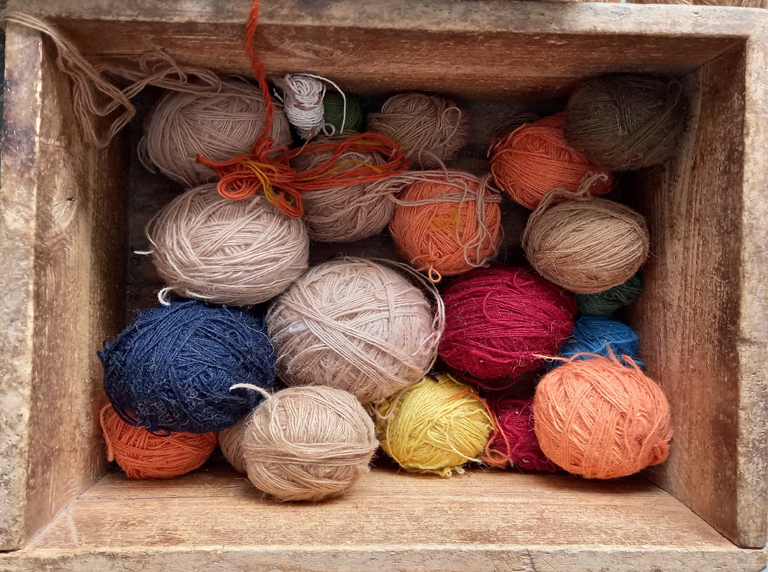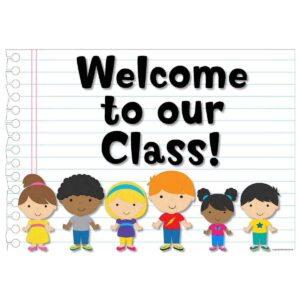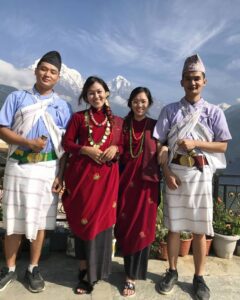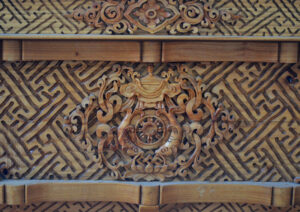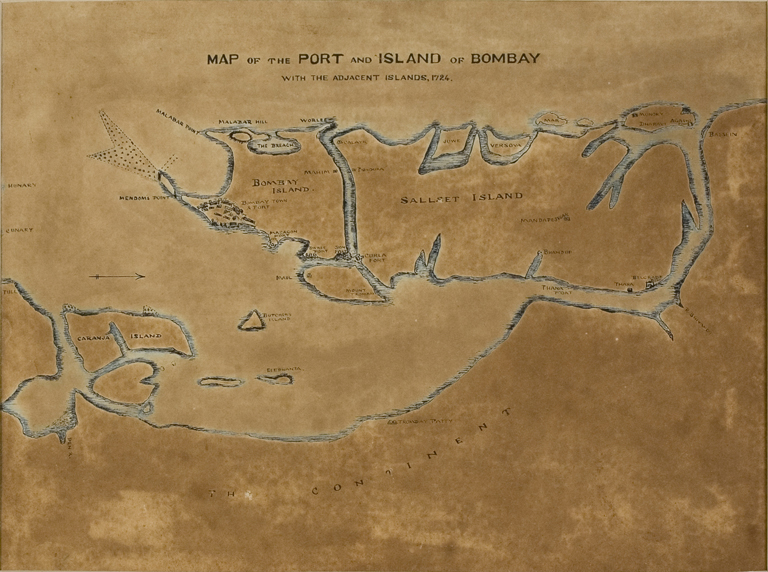Pema Kesang Sherpa
Heritage Handicrafts museum is an ongoing museum project at Namchi, South Sikkim under the Directorate of Handicrafts and Handloom, Department of Commerce and Industries. Directorate of Handicrafts and Handloom was initially known as Technical Institute for Training and Production of traditional arts and crafts. It was established in 1957 under the patronage of the 12th Chogyal (King) Palden Thondup Namgyal and his American wife Gyalmo (Queen) Hope Cooke Namgyal with just 58 trainees in the capital city of Gangtok, the then kingdom of Sikkim. Now, it evolved into a major hub of activities with 32 branches all over the Sikkim. The institute, not only preserves and showcases but promotes and disseminates the traditional arts and crafts of Sikkim. Thus, to carry out the activities many men and women were trained in multiple arts and crafts to develop and acquire skills to preserve and protect them from loss by society.
Carpet made in DHH, Namchi
The museum project is supposed to be completed and commissioned in the year 2016 but due to some reason, it got delayed, and now it’s on the verge of completion and hoping to finish by mid-2021. The project was funded by the North Eastern Council (it is the nodal agency for the economic and social development for the North East Region of eight states of NorthEast India- Arunachal Pradesh, Assam, Manipur, Meghalaya, Mizoram, Nagaland, Sikkim, and Tripura. It is constituted in 1971 by an Act of Parliament. The museum is positioned in the center of B.Ed Loyola College in the South East, adjacent to the Directorate of Handicrafts and Handloom, Namchi Public School in the East, and some upcoming projects in the North. It’s just 3 km away from the main market (central Park) of Namchi Bazaar. It is well connected by roadways. Taxis are easily available for commuting. The proposed museum is a four-storied building with a slanting roof. The ground floor is dedicated to CFC (Common Facility Centre) for those people who are interested in carpentry work. The room is equipped with machines and tools required for an artist. The first, Second, and Top floors are for the showcasing of various traditional arts and crafts collections. The First floor is divided into two halls; one is for the display of carpet and the other is for handloom products. In all the galleries, artifacts will be displayed made by the local artist of the DHH and other artists of the society. The second floor has three sections- the Thangka Gallery, Wooden Gallery, and Cane and Bamboo Gallery. Galleries are planned by keeping in mind the free movement of the visitor and circulation of fresh air by providing ventilation in each gallery. Audio Visual and ethnic galleries are placed on the top floor with a balcony to have a beautiful view of the landscape. Ramps, lifts, and restrooms are well thought for our visitors. Curator office, a storeroom for the reserved collection, and other security matters like installation of CCTV cameras, fire extinguishers are also there. A generator is also available for backup.
Handicrafts Heritage Museum has planned for various activities to engage visitors of all ages for having a pleasing and remarkable experience in the museum. The program has been executed in such a way that they find it exciting and as well as interesting. It has the target to fulfill every individual need who comes to the museum with their families, friends, guests, etc. Though, the relationship between the museum and the visitor is continuous. The beauty of the museum stands out only if we organize and engage the visitor in some interesting activities for the society as a whole. The success of a museum is decided by the kinds of engagement programs it holds for the public, so for this reason, Heritage Handicrafts Museum has also planned different visitor experience programs for the public for them to come back time and again for the visit.
SCHOOL PROGRAMS
KINDERGARTEN
The various hands-on activities will be offered to the kindergarten students to learn while having fun. A kit box having different materials for making different arts and crafts will be provided. The school teachers will be trained online for the activities before bringing the children to the museum. The program will be organized once a month. Entry to the museum will be free. The minimum fee will be charged for the art kits.
Shows: Various shows will be organized like
- Run local animated shows of myths, fables. Click here,
- Folk tales. (Click here)
- Puppet shows. Click here
- Organize a storytelling session once a month i.e on the first Monday of the month. Click here
Art kits
These art kits will have a workbook book containing the various drawing of various signs and symbols, flowers, animals, geometric designs, and other things to play with according to their requirements.
PRIMARY SCHOOL
Primary school children are the most active and energetic ones. They love the program which engages them mentally and physically. They will be taken for a guided tour. After the tour is done, they will be engaged in various activities like painting modern art, abstract, clay modeling, sculpting, etc.
SECONDARY SCHOOL
The most creative minds are found in this group. We can familiarize them with the different traditional arts and crafts of Sikkim. Based on that, we can involve them in various activities.
Practical kits
This kit box will have an exercise book with information about the natural dyes, parts of a plant for extraction of color, and its process. Different types of yarn and their sources.
HIGHER SECONDARY SCHOOL
They are the most enthusiastic group to know more about things, so a short talk is a good start. Teach them the co-relation between geometry and art. The uses and significance of Buddhist signs and symbols in the art and craft.
COLLEGE AND UNIVERSITY
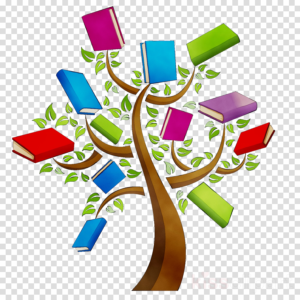
Seminar and workshops: To organize seminars and workshops on different topics for college and university students every six months. Encourage them to volunteer their service in the museum during their vacations.
TEACHERS AND EDUCATORS
Invite and engage the teachers (online and offline) from different schools and familiarize them with the museum fun activities. Plan different theme exhibitions for them so that they can bring the school children to the museum and educate their students. The Loyola College of Education and DIET will be the best ones to involve as they are directly linked to these people.
ADULT PROGRAM

To arrange for the rare art films, a documentary for the visitors. Offer talks and walks on the work of different art and artist of the community.
Saturday for women
We can make Saturday an entry-free day for the women in the museum to give a break from the monotonous daily chores. Plan out for fun activities every first Saturday evening.
SENIOR CITIZEN

Here we can engage the senior citizen visitor for meditation. The meditation will be held every month for the whole day. The learned Lamas will be invited to carry out the activities in the right way to achieve the goal. In a pandemic situation like this, the program can be conducted virtually.
FAMILY PROGRAM
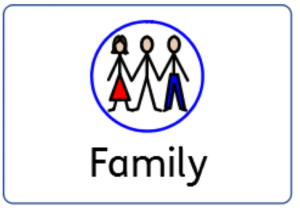
Every family loves to plan an outing with their children where they can learn and have fun at the same time. The museum is the only place where they can satisfy their needs and plan for the various programs. The family will have to apply for the registration. The group should have four members from each family. The minimal registration fees will be charged and as well as for the materials that they are going to use for the activities. The best one will be awarded certificates.
Summer camps
Organize a summer camp to bring out the hidden creativity of a kid. Kids will be categorized into groups according to their age. A minimal fee for registration and art kits will be charged. Only half will be charged in the case of two or more kids of the same family. Reservation will be done one month before the program starts, which will be advertised on social media.
Kids Club
Form a club that includes the kids from different age groups, who can meet once a month along with their family members. Engage them with different art activities. The kids will be provided with a membership card with a registration number. The minimum fee will be charged.
Cultural program
Young children will have to engage in cultural programs like singing, dancing, yoga, and many more to bring out their hidden talents.
PROGRAM FOR DIFFERENTLY ABLED VISITOR
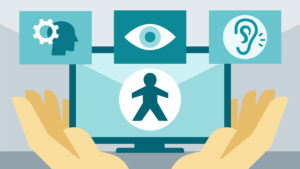
Tactile program for vision impaired
Visitors with vision impairment are also provided with lots of sensing exhibitions. They will be allowed to touch the object wearing rubber gloves. Some of the objects will have a voice explanation and the braille labels.
Hearing problem
Sign language interpretation will be provided to the visitor with a hearing disability. Selected objects will be supported with the sign language interpretation on the kiosk.
People with a developmental disorder
The visitor with developmental and learning disabilities of any age will be taken care of by escorting them in a gallery and engage them in some colorful hands-on activities.
COMMUNITY PROGRAMS

The community program for the different communities will be a common platform to connect with different people through arts and crafts. Local artists will be invited for a live demonstration of their work in the museum premises, where visitors can directly interact with the artist and buy the products on the spot.
Festive food for preparing different types of communities cuisine will be held according to the festival in the museum.
MONKS and NUNS
The real custodian of the treasure and the living museum. Monks and nuns from different monasteries will be invited for a tour. Invite them for the interpretation of thangka, mandala, Buddhist ritual, etc. in the museum once in six months.
GUEST PROGRAMS

Guest Program is basically a program for those who come only once in their entire lifetime, so for this kind of visitor we provide a guided tour and live demonstration of carpet weaving, thangka painting, and wood carving in the museum premises.
Visitors will be allowed to sit for the meditation, prayer, chanting, and prostration (here) in a separate hall.
YOUTH
(13-19 years)
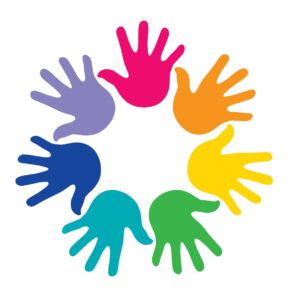
Since the museum is for all, it should entertain every individual’s quest for knowledge and also satisfy their needs. Here, the program focuses more on the youth of a wide range 13 years teen to 19 years adult teens irrespective of their physical status like developmental disorder, hearing problem, vision impaired, etc. They are the most energetic, enthusiastic, quick learner, amongst all the groups. They are always inquisitive about the facts and also love to have fun while learning something new. So, the museum visit has to be exciting for the early teens and interesting for the adult ones. The museum can play a crucial role, unlike in the school with the daily routine of reading and writing, has the liberty to teach them in different ways by involving them in the activities. As they step into adolescence, they become inconsistent and lack concentration in studies, and get bored easily. It would be the right time to involve them in the exciting program and inculcate the interest and knowledge about the art, culture, tradition, and heritage. The museum will be the best place for the children to have fun and learn things that excite them to have a memorable experience. They can visit the museum with different groups and in each group, they will learn and enjoy a different experience.
Teens with families
Family engagement is essential in promoting healthy physical, cognitive and social-emotional development, and academic achievement of children and youth. The program will be conducted every third Saturday of the month (2nd and 4th Saturday is a holiday).
Entry: All family groups are welcome but to participate in the program they have to register their names online and the first five groups will be selected to participate in the program. The fees will be charged according to the materials that are provided for activities. The group with four members will be taken. The forms will be made available online with detailed information.
The program will include lots of practical sessions and it will not be the same forever. The Museum will come up with new and innovative ideas each time. These are some of the examples; preparation of local cuisine, and so on.
BUDDHIST OFFERING AND ITS MEANINGS
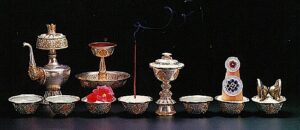

Seven water bowl offering in a Himalayan Buddhist tradition
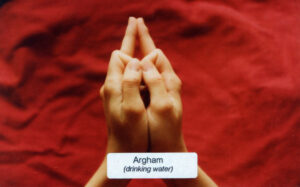
Argham, the hand gesture of Drinking water offering
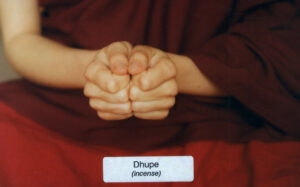
Dhupe, the hand gesture of incense offering

Pushpe, hand gesture for flower offering
TRADITIONAL CUISINE OF SIKKIM

Nettle leaf (local name: Sisnu) soup

Shya phaley (meet roti)

Frog’s leg
Teens with friends
Teens club, to be a member of the teens club they have to register themselves by paying the registration fees. Teens love to be with their friends and enjoy themselves more. So, we can invite them in a group and engage them in some activities where they have to use their heads and hands together. Like,
- Educate them about the use of different types of geometric design in the arts, crafts, and iconography.
- Information about the natural dyes, parts of a plant used for extraction of color, etc.
- Different types of yarn and their sources.
- Angora rabbit’s wool
- The transformation of wood into an art object
- Raw materials are used in the carpet and other handloom products.
- Painting, puppet show, clay modeling, modeling, interpretation of an object, butter sculpture, mandala, mask, etc
- Journey to Buddhist art and iconography the traditional attire of different communities competition like;
DRAP WORN BY DIFFERENT COUNTRIES
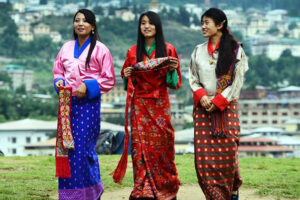 Kira, traditional ladies attire of Bhutan
Kira, traditional ladies attire of Bhutan
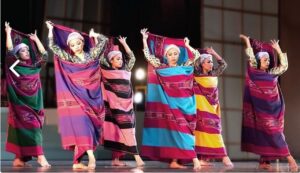
Malong is a traditional attire
Art contest
Students from different schools will be invited to an art contest. The registration fee will be charged for participation. Online art competitions on different themes will be conducted. The painting painted by the children will be exhibited in a separate hall for a month.
Organize series of talks for the students and researchers. We can invite experts both young and retired from our own institution to share their experiences. Request for the donation for those who are willing to do so.
PROGRAM FOR DIFFERENTLY-ABLED YOUTH
Vision impaired
The visitor with disabilities is provided with lots of sensing exhibitions narrating the stories. Selected objects will be supported with braille text and sound background. For example, Snow Lion
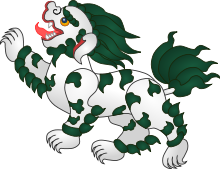
Snow Lion
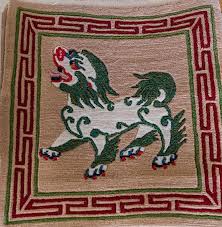
Snow Lion in carpet
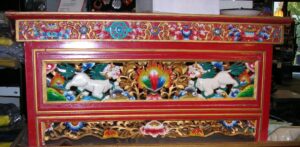
Snow Lion in Table
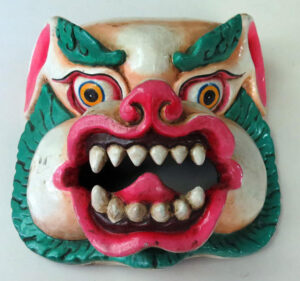
Snow Lion mask

Snow lion as a guardian in Monastery
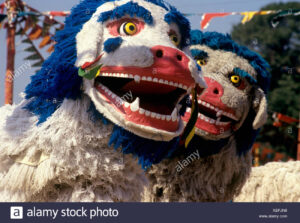
Snow lion (Singhi Dance) performed at Pemayangste Monastary at West Sikkim (click here)
Hearing problem
Sign language interpretation will be provided. Play a musical instrument using a hearing aid device.
Learning disability
The teens with developmental and learning disabilities will be taken care of by escorting them in a gallery visit and let them play with some hands-on program.
Second Friday of the month: will have special sessions for those teens. They will be escorted by the museum personnel along with their family member. A room will be provided for them to play with the colors and make whatever they like and later on will be displayed in the room itself.
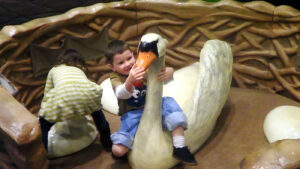
Child enjoying the swan ride
TALK
Talk on different topics of Buddhism for example; Dharmachakra parvatana

Buddha in Dharmachakra parvatana

Eightfold path and it’s meaning
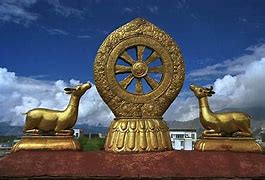
Dharmachakra with deer on either side
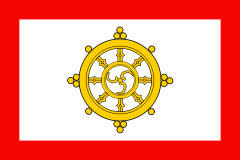
Sikkim’s Royal Flag having an eightfold path symbol
Dharmachakra in wood carving
ARTIST’S EVENT
Mega Sale produces by our local youths, during the Diwali festival to attract visitors to the museum. The program will be held for three days to see and buy the rare and beautiful things made by our local artists to promote the vocal for locals. It will be a common platform for local artisans to meet and interact with each other.
MARKETING PLAN
Heritage Handicrafts Museum will adopt different marketing tools to attract visitors. It aims to satisfy the audience and as well as the museum by generating revenue
1.Connect the museum to the local communities’ people.
HOW: Become a member.
TYPE OF MEMBERSHIP: Annual, Half-yearly, and quarterly.
FEES: According to the type of membership they choose.
2. Teaming with various schools, research groups, artists and weavers, etc.
I. SCHOOL GROUPS: Organise various activities based program.
II. RESEARCH GROUP: Organise seminars, talks, and conferences.
III. ARTIST and WEAVERS: Workshops and expos.
3.Collaboration with CDAC for technical assistance and marketing in the North East Heritage Portal.
- Through this portal, the museum will be known globally by the people.
- Products made by the weavers and artists will be sold online.
Conclusion
This paper is just an attempt to show how a museum conducts various activities for the visitor to engage their attention by making their visit more informative and exciting. Just to show, how gradually a museum has become a source of information and entertainment for the public. By using various media, it can attract people from all walks of life and understand the concept and beauty of an object in the simplest way.
Acknowledgments
Directorate of Handicrafts and Handloom, Namchi, South Sikkim
Directorate of Handicrafts and Handloom, Gangtok, East Sikkim
Namgyal Institute of Tibetology, Deorali, Gangtok, Sikkim
Centre of Arts and Archaeology and American Institute of Indian Studies, New Delhi
Embassy of the United States of America, New Delhi
Special Thanks
Dr. Madhuvanti Ghose for mentoring and guidance.
Ms. Purnima Mehta, Dr. Vandana Sinha, Ms. Stuti Gandhi, and the American Institute of Indian Studies team for their constant support.
Dr. Vaishali, Dr. Jyoti Tokas, and other November-December 2021 Cohort Team for exchanging ideas.
Photos and Media source
Internet
